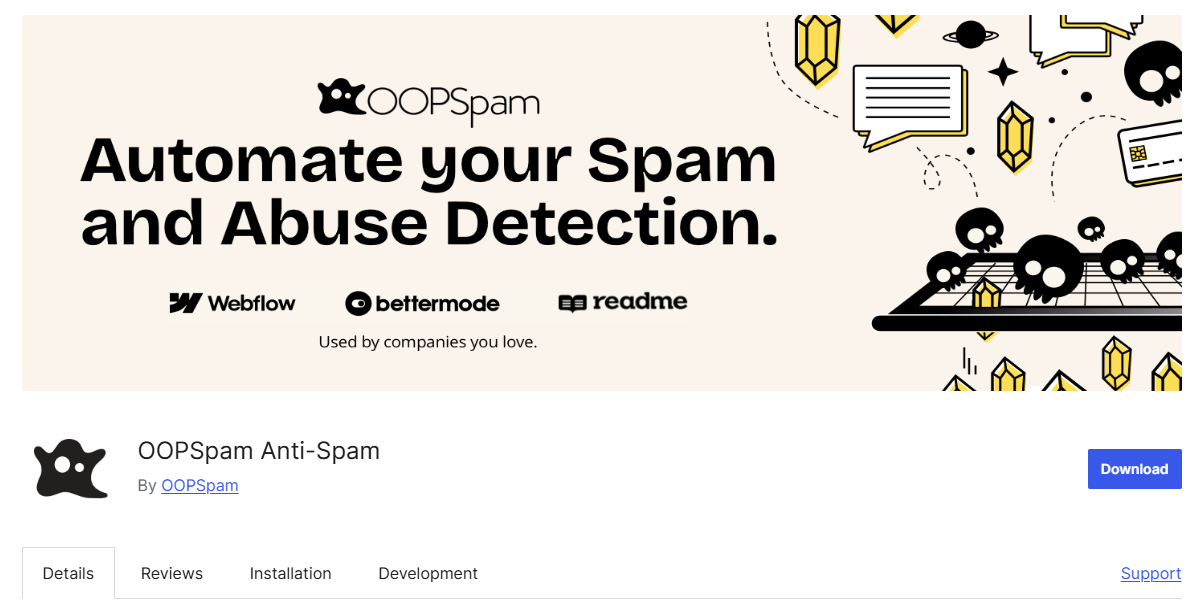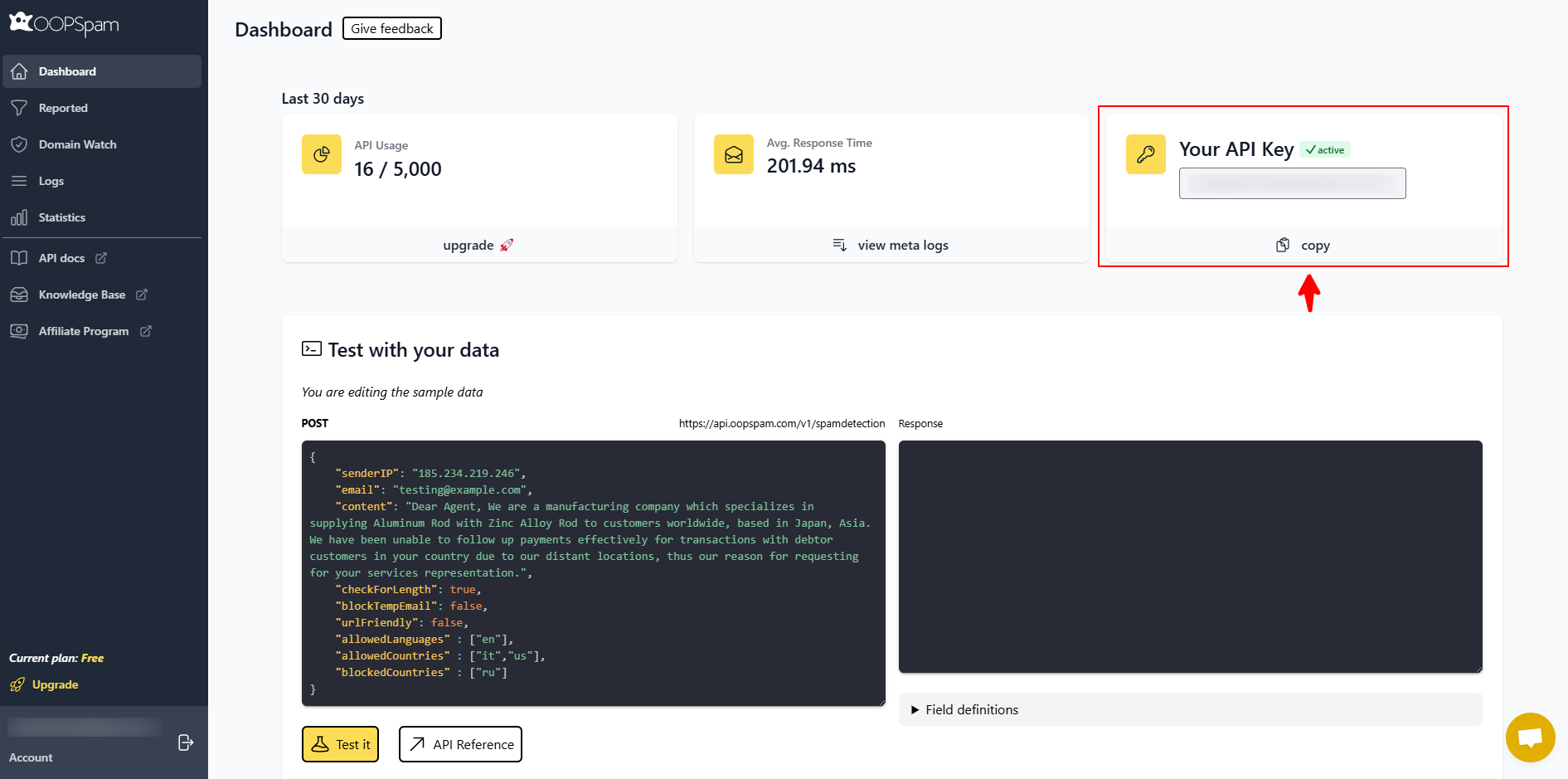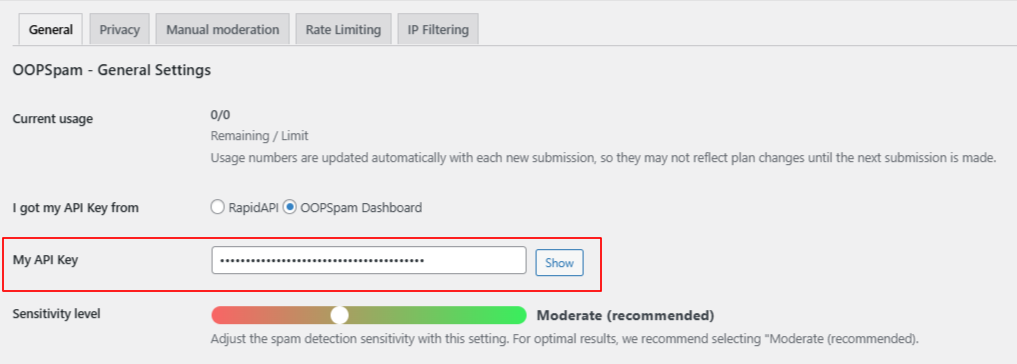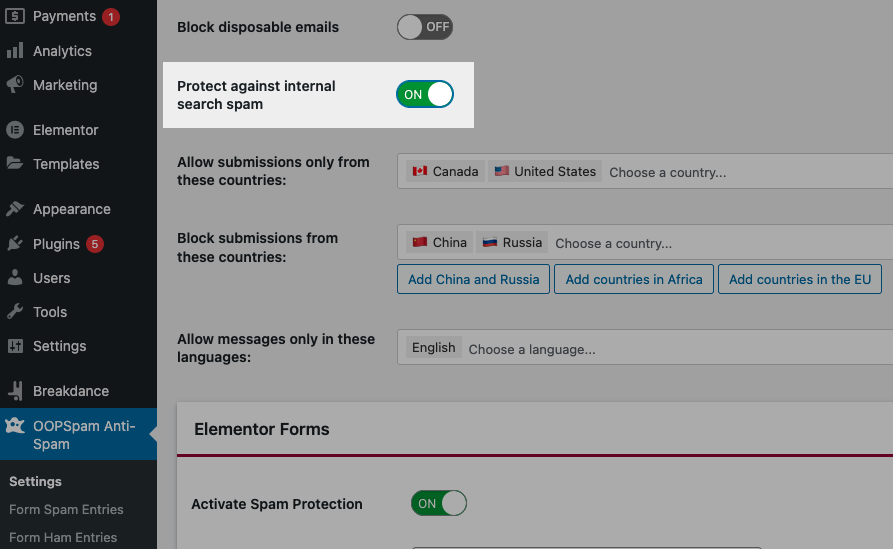
Chazie Baniquid
Technical Content Marketer
6 minutes to read
How to Protect Your WordPress Website from Internal Search Spam

Internal search spam is a quiet but persistent threat to WordPress websites. It clogs your analytics, wastes crawl budget, and can even harm your brand’s credibility. In this blog, we’ll walk through what internal search spam is, why it matters, and how you can use the OOPSpam Anti-Spam plugin to protect your WordPress site effectively.
What Is Internal Site Search Spam?
Internal search spam occurs when spammers exploit the search functionality of your website. Most WordPress websites use URLs like ?s=keyword or /search/keyword for internal search queries. Unfortunately, this means anyone can create URLs that look like they belong on your site but include spammy or malicious keywords.
These URLs can then be indexed by search engines or shared across low-quality websites, resulting in fake search pages like:
https://yourwebsite.com/?s=online+casino+promo+codes
Spammers use these fake pages to advertise their content using your site’s domain and authority. It’s cheap, it’s crude, and it happens more than most site owners realize.
Why Internal Search Spam Is a Problem
Even if these spam pages don’t directly affect your SEO rankings, they come with real-world implications:
- Crawl Budget Waste: Search engines waste time crawling junk URLs instead of your valuable content.
- Brand Risk: Your domain ends up associated with spammy or illicit content.
- Analytics Pollution: Your traffic data becomes harder to interpret.
- Hosting Load: Bots generate high-volume traffic, which can use up server resources.
For large or popular WordPress sites, these effects are amplified.
How Do Spammers Create Internal Search Spam?
Spammers often write scripts that automatically generate search queries across thousands of websites. These scripts:
- Target both
?s=queryand/search/query formats - Append spam content into the URL
- Crawl paginated search results (e.g.
?s=loan&page=3) - Exploit RSS feeds (e.g.
/search/query/feed/rss2/)
This results in thousands of fake URLs appearing in Google Search Console, bloating your reports with “Crawled but not indexed” messages.
Preventing Site Search Spam with OOPSpam

One of the most effective ways to prevent internal search spam is by enabling the protection setting available in the OOPSpam Anti-Spam plugin for WordPress.
Step-by-Step: Enable Internal Search Spam Protection
Step 1: Install or Update the Plugin
Head to your WordPress dashboard, search for OOPSpam Anti-Spam in the plugin directory, and install or update to the latest version.

Step 2: Sign Up and Copy Your API Key
You’ll need an API key, which you can get by signing up on the OOPSpam Dashboard. Copy your API key and paste it into the plugin settings.
Step 3: Add Your API Key

Go to Settings > OOPSpam Anti-Spam in your WordPress Admin. Under the General tab, select OOPSpam Dashboard as your source, and paste your API key into the “My API Key” field.
Step 4: Toggle On Internal Search Protection
- Navigate to OOPSpam Anti-Spam in the left-hand menu
- Toggle ON the setting labeled “Protect against internal search spam”

This setting automatically blocks known spam search patterns before they reach your site, helping you stay ahead of bot attacks.
How It Works
OOPSpam (that’s us 👋) uses machine learning filtering and threat intelligence to detect spammy patterns in search query submissions. It doesn’t rely solely on keyword lists; instead, it analyzes the intent and behavior behind the requests.
Combined with its broader anti-spam capabilities, this setting strengthens your site’s overall protection.
Additional Tips to Strengthen Internal Search Protection
While OOPSpam covers a lot of ground, it’s smart to layer your defenses. Some SEO plugins may automatically add a noindex tag to internal search result pages, which helps prevent them from being indexed by search engines. However, this alone isn’t enough to stop spam URLs from being generated or crawled.
Here are a few technical steps you can take in parallel:
1. Add Disallow Rules in robots.txt
Prevent search engines from crawling search results pages.
User-agent: *
Disallow: /?s=
Disallow: /search/
This stops crawlers from accessing those URLs, although it won’t block indexing if those pages are linked elsewhere.
2. Add a Noindex Tag to Search Pages
Edit your theme’s search.php to include:
<meta name="robots" content="noindex, nofollow">
This tells search engines not to index or follow any links on your search results page.
3. Review Google Search Console Regularly
- Monitor for strange URLs in the Pages section
- Check for spikes in “Crawled but not indexed” URLs
- Use the URL inspection tool to identify where spam links come from
Final Thoughts
Internal search spam is a subtle form of abuse that can escalate quickly. It may not always hurt your SEO directly, but it creates noise, confusion, and potential brand risks. Thankfully, WordPress site owners can now take clear, simple steps to guard against this with tools like OOPSpam.
By enabling the “Protect against internal search spam” option in your plugin settings and following the additional best practices above, you can maintain a cleaner, safer, and more efficient website.
If you’re running a busy site, dealing with user-generated content, or simply want peace of mind, OOPSpam gives you that layer of protection you need—without the technical complexity.
Need help setting it up? We’re happy to assist. Contact us or visit our WordPress plugin page to get started.